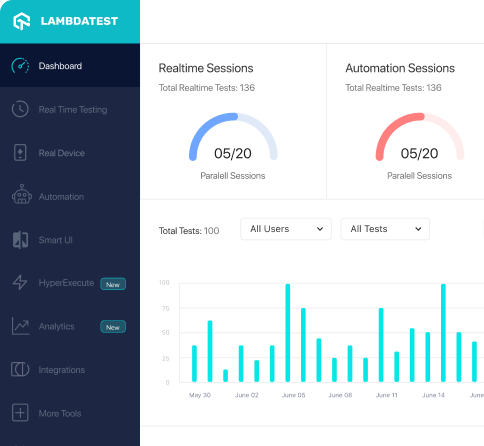How to use AbstractAssert_isNull_Test class of org.assertj.core.api.abstract package
Best Assertj code snippet using org.assertj.core.api.abstract.AbstractAssert_isNull_Test
Source:BaseTestTemplate.java
...12 */13package org.assertj.core.api;14import static org.assertj.core.api.Assertions.assertThat;15import static org.mockito.Mockito.mock;16import org.assertj.core.api.abstract_.AbstractAssert_isNull_Test;17import org.assertj.core.internal.Conditions;18import org.assertj.core.internal.Objects;19import org.junit.Before;20import org.junit.Test;21/**22 * Template to write tests for {@link AbstractAssert} implementations.23 * 24 * <p>25 * These classes are simple wrapper types, that delegate the real work to internal objects. For each method, we only need to test26 * that:27 * <ul>28 * <li>invoking the method properly delegates to the relevant internal objects;</li>29 * <li>the method returns {@code this} (for assertion chaining).</li>30 * </ul>31 * This template factors most of the code to make the actual tests quick to write.32 * </p>33 * <p>34 * For each assertion class (e.g {@link BigDecimalAssert}), the template is specialized by a "base" class in the same package (35 * {@link BigDecimalAssertBaseTest}). To avoid cluttering the main package with hundreds of classes, the concrete tests reside in36 * a subpackage ({@link org.assertj.core.api.bigdecimal}). The base class also serves as a proxy to the package-private fields37 * of the assertion that need to be verified in the tests.38 * </p>39 * 40 * @param <S> the "self" type of the assertion under test.41 * @param <A> the type of the "actual" value.42 * 43 * @author Olivier Michallat44 */45public abstract class BaseTestTemplate<S extends AbstractAssert<S, A>, A> {46 protected S assertions;47 protected Objects objects;48 protected Conditions conditions;49 @Before50 public final void setUp() {51 assertions = create_assertions();52 inject_internal_objects();53 }54 /**55 * Builds an instance of the {@link Assert} implementation under test.56 * 57 * This object will be accessible through the {@link #assertions} field.58 */59 protected abstract S create_assertions();60 /**61 * Injects any additional internal objects (typically mocks) into {@link #assertions}.62 * 63 * Subclasses that override this method must call the superclass implementation.64 */65 protected void inject_internal_objects() {66 objects = mock(Objects.class);67 assertions.objects = objects;68 conditions = mock(Conditions.class);69 assertions.conditions = conditions;70 }71 @Test72 public void should_have_internal_effects() {73 invoke_api_method();74 verify_internal_effects();75 }76 /**77 * For the few API methods that don't return {@code this}, override this method to do nothing (see78 * {@link AbstractAssert_isNull_Test#should_return_this()} for an example).79 */80 @Test81 public void should_return_this() {82 S returned = invoke_api_method();83 assertThat(returned).isSameAs(assertions);84 }85 protected AssertionInfo getInfo(S someAssertions) {86 return someAssertions.info;87 }88 protected A getActual(S someAssertions) {89 return someAssertions.actual;90 }91 protected Objects getObjects(S someAssertions) {92 return someAssertions.objects;...AbstractAssert_isNull_Test
Using AI Code Generation
1package org.assertj.core.api.abstractassert;2import org.assertj.core.api.AbstractAssert_isNull_Test;3import org.assertj.core.api.ConcreteAssert;4public class ConcreteAssert_isNull_Test extends AbstractAssert_isNull_Test<ConcreteAssert> {5 protected ConcreteAssert invoke_api_method() {6 return assertions.isNull();7 }8 protected void verify_internal_effects() {9 }10}11package org.assertj.core.api.abstractassert;12import org.assertj.core.api.AbstractAssert_isNull_Test;13import org.assertj.core.api.ConcreteAssert;14public class ConcreteAssert_isNull_Test extends AbstractAssert_isNull_Test<ConcreteAssert> {15 protected ConcreteAssert invoke_api_method() {16 return assertions.isNull();17 }18 protected void verify_internal_effects() {19 }20}21package org.assertj.core.api.abstractassert;22import org.assertj.core.api.AbstractAssert_isNull_Test;23import org.assertj.core.api.ConcreteAssert;24public class ConcreteAssert_isNull_Test extends AbstractAssert_isNull_Test<ConcreteAssert> {25 protected ConcreteAssert invoke_api_method() {26 return assertions.isNull();27 }28 protected void verify_internal_effects() {29 }30}31package org.assertj.core.api.abstractassert;32import org.assertj.core.api.AbstractAssert_isNull_Test;33import org.assertj.core.api.ConcreteAssert;34public class ConcreteAssert_isNull_Test extends AbstractAssert_isNull_Test<ConcreteAssert> {35 protected ConcreteAssert invoke_api_method() {36 return assertions.isNull();37 }38 protected void verify_internal_effects() {39 }40}AbstractAssert_isNull_Test
Using AI Code Generation
1package org.assertj.core.api.abstract_;2import org.assertj.core.api.AbstractAssert_isNull_Test;3import org.assertj.core.api.ConcreteAssert;4public class ConcreteAssert_isNull_Test extends AbstractAssert_isNull_Test {5 protected ConcreteAssert invoke_api_method() {6 return assertions.isNull();7 }8 protected void verify_internal_effects() {9 }10}11package org.assertj.core.api.abstract_;12import org.assertj.core.api.AbstractAssert_isNotNull_Test;13import org.assertj.core.api.ConcreteAssert;14public class ConcreteAssert_isNotNull_Test extends AbstractAssert_isNotNull_Test {15 protected ConcreteAssert invoke_api_method() {16 return assertions.isNotNull();17 }18 protected void verify_internal_effects() {19 }20}21package org.assertj.core.api.abstract_;22import org.assertj.core.api.AbstractAssert_isIn_Test;23import org.assertj.core.api.ConcreteAssert;24public class ConcreteAssert_isIn_Test extends AbstractAssert_isIn_Test {25 protected ConcreteAssert invoke_api_method() {26 return assertions.isIn("Yoda", "Luke");27 }28 protected void verify_internal_effects() {29 }30}31package org.assertj.core.api.abstract_;32import org.assertj.core.api.AbstractAssert_isNotIn_Test;33import org.assertj.core.api.ConcreteAssert;34public class ConcreteAssert_isNotIn_Test extends AbstractAssert_isNotIn_Test {35 protected ConcreteAssert invoke_api_method() {36 return assertions.isNotIn("Yoda", "Luke");37 }AbstractAssert_isNull_Test
Using AI Code Generation
1Here is an example of a test class for the isNotNull() method:2package org.assertj.core.api.abstract;3import static org.assertj.core.api.Assertions.assertThat;4import org.assertj.core.api.AbstractAssert;5import org.assertj.core.api.AbstractAssert_isNotNull_Test;6import org.junit.Test;7public class AbstractAssert_isNotNull_Test extends AbstractAssert_isNotNull_Test {8 protected AbstractAssert<?, ?> invoke_api_method() {9 return assertions.isNotNull();10 }11 protected void verify_internal_effects() {12 assertThat(getObjects(assertions)).containsNull();13 }14}Automation Testing Tutorials
Learn to execute automation testing from scratch with LambdaTest Learning Hub. Right from setting up the prerequisites to run your first automation test, to following best practices and diving deeper into advanced test scenarios. LambdaTest Learning Hubs compile a list of step-by-step guides to help you be proficient with different test automation frameworks i.e. Selenium, Cypress, TestNG etc.
LambdaTest Learning Hubs:
- JUnit Tutorial
- TestNG Tutorial
- Webdriver Tutorial
- WebDriverIO Tutorial
- Protractor Tutorial
- Selenium 4 Tutorial
- Jenkins Tutorial
- NUnit Tutorial
- Jest Tutorial
- Playwright Tutorial
- Cypress Tutorial
- PyTest Tutorial
YouTube
You could also refer to video tutorials over LambdaTest YouTube channel to get step by step demonstration from industry experts.
Most used methods in AbstractAssert_isNull_Test
Try LambdaTest Now !!
Get 100 minutes of automation test minutes FREE!!



